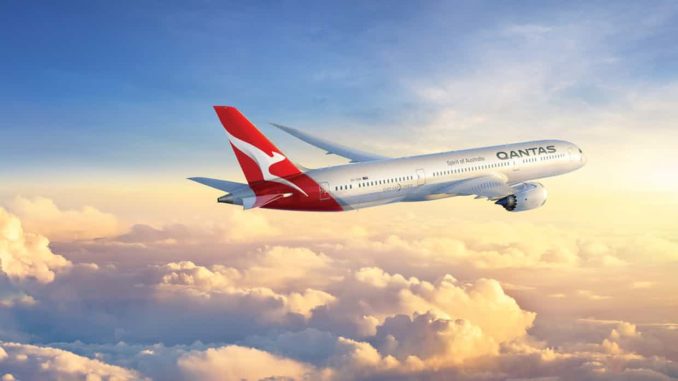
Australia and Britain will be connected by a non-stop journey for the first time with the arrival in London on Sunday of a direct Qantas flight from Perth.
The QF9 flight, which takes off on Saturday evening from the capital of Western Australia, is expected to take around 17 hours and 20 minutes – depending on winds – and will mark a historic aviation feat by completing the 9,000-mile (14,500km) route without a break.
Qantas is using the Boeing 787-9 Dreamliner for what will be the first direct commercial passenger flight between the two nations. And with more efficient aircraft giving longer ranges, some believe it is merely the precursor to the ultimate goal of a non-stop journey between London and Sydney, a further 4½ hours east.
Business Today: sign up for a morning shot of financial news
Read more
For the inaugural flight – scheduled to touch down at Heathrow at around 5.05am on Sunday – Qantas has reduced the capacity of the plane to 236 business, premium economy and economy seats. It has also increased the leg room by an inch for the cheapest seats.
At a launch event on Friday night, Alan Joyce, the airline’s CEO, said: “Qantas has been preparing for this moment for 98 years … (since) we were founded in 1921.”
He said the old “kangaroo route” between Australia and the UK was once “seven stops and it took four days. But way back then it took 42 days by boat to travel to the UK.
“And back then it cost you £525 to use the service. The equivalent of two and a half years of your salary today. Tomorrow they will do the flight in 17 hours and 20 minutes. No stops. It is a gamechanger for Australian aviation.”
Qantas has teamed up with Sydney University’s Charles Perkins Centre in order to investigate alleviating jet lag using optimum lighting, different cabin pressure and dietary offerings, including the timings of the meals served during the lengthy flight.
Advertisement
Peter Cistulli, professor of sleep medicine at the centre, says Qantas approached himabout improving sleep on planes and from there a project evolved that included nutrition and physical activity while traveling.
“There has been a breakaway from the traditional formula where you get on an aeroplane, you get fed and watered and then at the other end you get fed and watered and there is this white space in the middle. Doing that on a 17-hour flight doesn’t make sense because you are going to leave people for a long time.
He said lighting on the plane would “nudge the biological clock towards the destination timezone so it kick starts the process of readjusting your body clock.”
The professor said there was no single magic bullet to fight jetlag, instead it required small things done collectively with no one size fits all for passengers.
On the first flight, the centre is wiring up 10 passengers with medical-grade, Fit-Bit style monitors to measure sleep and physical activity. Another device will measure posture.
Prof Cistulli hopes the data from the devices on this and subsequent flights will provide valuable information which could go some way to making long-distance air travel more bearable. But he says much more data is required.
“The holy grail that we are heading towards is to capture information over a much longer period of time. That would include preflight (perhaps a week preflight), the entire flight and then possibly a week post-flight.”
The statistics for the inaugural flight make interesting reading. It will travel at approximately 560mph (900kmh) and is expected to use 110,000 litres of fuel.
Qantas says the 787 uses up to 20% less fuel than similar sized aircraft.
Return economy flights will cost from £1,095.
END

Be the first to comment